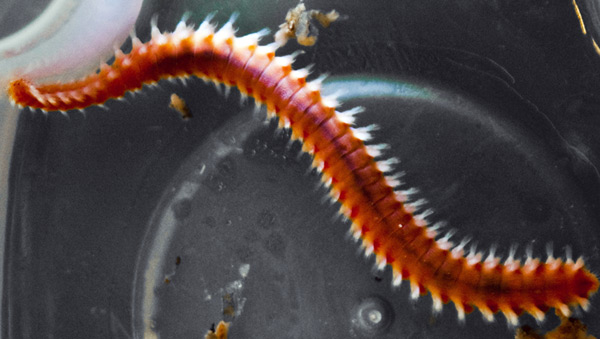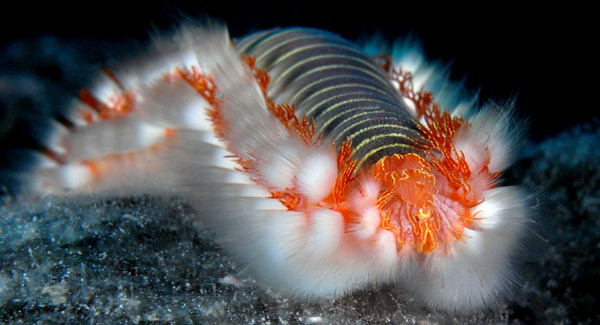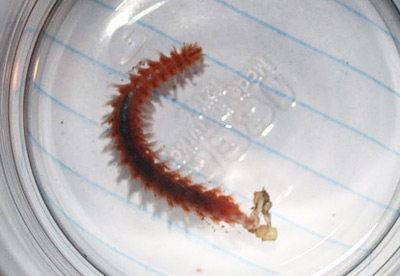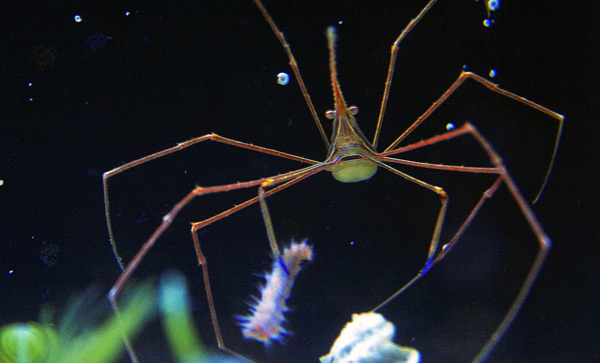In my early days of writing for the marine aquarium hobby, I frequently cautioned fellow hobbyists to be on the lookout for “unwelcome” live rock stowaways, and high on my list of undesirables were the bristleworms. As I saw it then, every prickly polychaete that poked its head out of the rockwork was a potential troublemaker with a vicious sting and an insatiable appetite for coral polyps. Sure, some were supposedly worse than others, but why take the chance? Get them before they get you and your corals, I used to think.
Now, having acquired a few more decades’ worth of aquarium-keeping wisdom, I’ve come to appreciate that most of these worms are beneficial scavengers and consumers of detritus and, thus, actually welcome aquarium inhabitants despite their creepy appearance. They’re also useful in that they help keep the substrate stirred somewhat.
But what about those poky bristles?

It’s true enough that bristleworms can poke you with their calcareous bristles (called chetae), potentially causing localized pain, itching, and/or swelling to varying degrees. So-called fireworm species, e.g., Eurythoe complanata, possess venom-tipped chetae that can inflict a very painful sting. However, this risk can largely be mitigated by wearing protective gloves when working in the aquarium, particularly when handling rocks or substrate material.
I was stung on the finger by a bristleworm (not the fireworm variety, gratefully) on two separate occasions, resulting in swelling and itchiness, but not severe pain. Both times, it happened when I picked up a particular rock holding a gorgonian specimen—admittedly with unprotected hands—so I could brush off some algae. The sting itself was barely noticeable, and I never would have figured out the cause if I hadn’t seen the worm quickly retreat into a hole in the rock (right near the affected finger) when it happened the second time.
But they eat corals and other livestock, don’t they?
In addition to packing a potent sting, Hermodice carunculata, the Caribbean bearded fireworm or coral-eating fireworm, is notorious in the hobby for feeding on corals and other sessile invertebrates. Hence, it has become something of a “poster worm” for misbehaving live rock hitchhikers. However, it is very much an exception in this regard. Remember, of the myriad bristleworm species out there, the vast majority pose no threat whatsoever to aquarium livestock.

As far as those reports of bristleworms killing and eating fish are concerned…well, let’s just say they’re wildly exaggerated. In these instances, the fish has died of some other cause and the worm is just scavenging the remains.
If you do discover you have the dreaded bearded fireworm in your tank (not as common as the species’ notoriety might suggest), you may be able to catch and remove it using a baited trap.
Booming bristleworm population
In the event that you experience a bristleworm population explosion in your system, the first factor to consider is that you’re likely overfeeding the tank and need to cut back while stepping up your maintenance routine. If that doesn’t reduce the population, there are also various animals you can introduce for control purposes, for example certain Pseudocheilinus sp. wrasses, the banded coral shrimp (Stenopus hispidus), or the arrow crab (Stenorhynchus seticornis).
However, keep in mind that no animal should be added to your tank for the purpose of bristleworm control unless you’re certain it’s compatible with all your current livestock and that you can provide for its needs long term. Also, be aware that beyond limiting their numbers, some such control organisms may virtually wipe out the population of these beneficial worms in a system.




